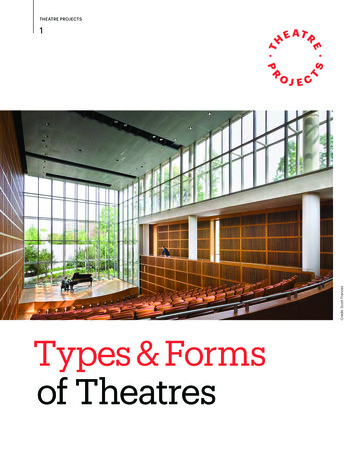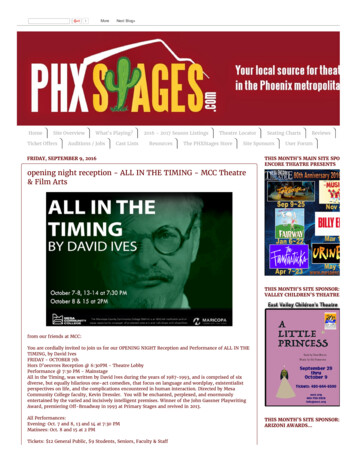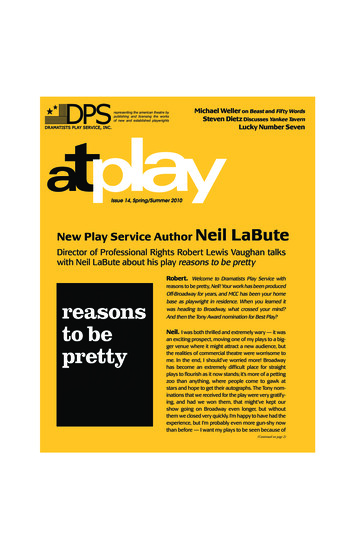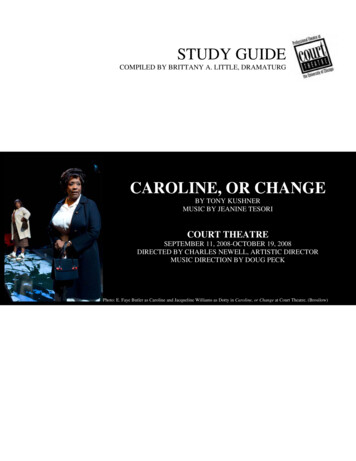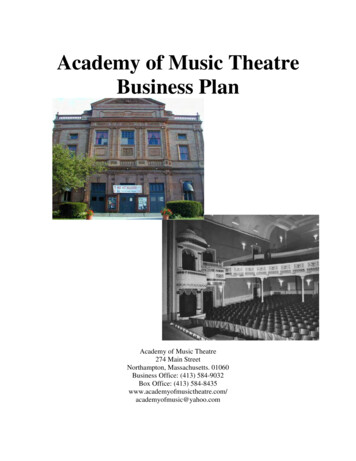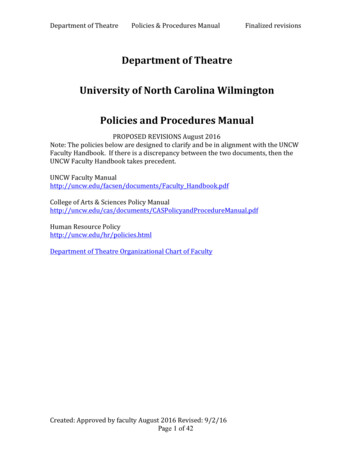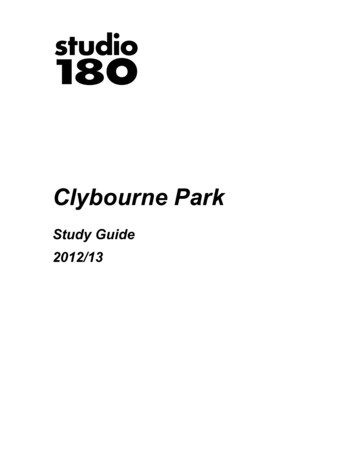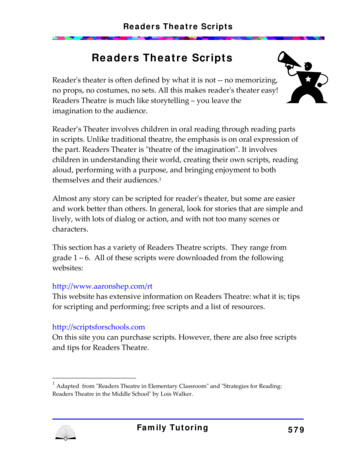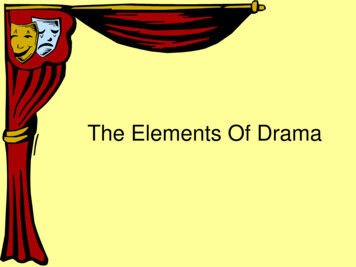
Transcription
The Elements Of Drama
The Elements of DramaThe elements of drama, by which dramaticworks can be analyzed and evaluated, can becategorized into three major areas:Literary elementsTechnical elementsPerformance elements
AristotleAristotle (384-322 BC) was a Greek philosopher whosewritings still influence us today. He was the first to writeabout the essential elements of drama more than 2,000years ago. While ideas have changed slightly over theyears, we still discuss Aristotle's list when talking aboutwhat makes the best drama.
Aristotle’s Six Elements of DramaAristotle considered these six things to be essential to good drama: Plot: This is what happens in the play. Plot refers to the action; the basicstoryline of the play. Theme: While plot refers to the action of the play, theme refers to themeaning of the play. Theme is the main idea or lesson to be learned fromthe play. In some cases, the theme of a play is obvious; other times it isquite subtle. Characters: Characters are the people (sometimes animals or ideas)portrayed by the actors in the play. It is the characters who move the action,or plot, of the play forward. Dialogue: This refers to the words written by the playwright and spoken bythe characters in the play. The dialogue helps move the action of the playalong. Music/Rhythm: While music is often featured in drama, in this caseAristotle was referring to the rhythm of the actors' voices as they speak. Spectacle: This refers to the visual elements of a play: sets, costumes,special effects, etc. Spectacle is everything that the audience sees as theywatch the play.
The Modern TheaterIn the modern theater, this list has changedslightly, although you will notice that many ofthe elements remain the same. The list ofessential elements in modern theater is asfollows: CharactersPlotThemeDialogueConventionGenreAudience
The Modern Theater The first four, character, plot, theme and dialogue remain the same, but thefollowing additions are now also considered essential elements of drama.Convention: These are the techniques and methods used by the playwrightand director to create the desired stylistic effect.Genre: Genre refers to the type of play. Some examples of different genresinclude comedy, tragedy, mystery and historical play.Audience: This is the group of people who watch the play. Manyplaywrights and actors consider theaudience to be the most important elementof drama, as all of the effort put in towriting and producing a play is for theenjoyment of the audience.
Literary ElementsThere are six stages in a plot structure.1.Initial incident: The event that “gets the storygoing”2.Preliminary event: Whatever takes placeBEFORE the action of the play that is directlyrelated to the play3.Rising action: A series of events following theinitial incident and leading up to the dramaticclimax4.Climax: The turning point or high point of a story,when events can go either way5.Falling action: The series of events following theclimax6.Denouement: Another term for the conclusionfrom the French word for “unraveling”
Other Literary ElementsExposition: The “who, when, whereand what” part of the playStory organization: beginning, middle,endConflict: The internal or external struggle between opposingforces, ideas, or interests that creates dramatic tensionSuspense: A feeling of uncertainty as to the outcome, used tobuild interest and excitement on the part of the audience
Other Literary ElementsLanguage: In drama, the particularmanner of verbal expression, thediction or style of writing, or thespeech or phrasing that suggests aclass or profession or type of characterStyle: the shaping of dramaticmaterial, settings, or costumes in adeliberately non-realistic mannerSoliloquy: A speech by a single actor who is ALONE onstageMonologue: A long speech made by one actor (a monologuemay be delivered alone or in the presence of others.)
Technical Elements Scenery (set): The theatrical equipment, such ascurtains, flats, backdrops, or platforms, used in adramatic production to communicate environment Costumes: Clothing and accessories worn byactors to portray character and period. Props: Short for properties; any article, exceptcostume or scenery, used as part of a dramaticproduction; any moveable objectthat appears on stage during aperformance, from a telephone to atrain
Other Technical ElementsLights: The placement, intensity, and color of lights tohelp communicate environment, mood, or feelingSound: The effects an audience hears duringperformance to communicate character,context, or environmentMakeup: Costumes, wigs, and bodypaint used to transform an actorinto a character.
Performance ElementsActing: Use of face, body, and voice toportray characterCharacter motivation: The reason orreasons for a character’s behavior; anincentive or inducement for further actionfor a characterCharacter analysis: In responding to dramatic art, theprocess of examining how the elements of drama – literary,technical, and performance – are usedEmpathy: The capacity to relate to the feelings of another
Other Performance ElementsSpeaking: The mode of expression or delivery of linesBreath control: Proper use of the lungs and diaphragm muscle formaximum capacity and efficiency of breath for speakingVocal expression: How an actor uses his or her voice toconvey characterInflection: Change in pitch or loudness of the voice.Projection: How well the voice carries to the audienceSpeaking style: The mode of expression or delivery of linesDiction: Selection and pronunciation of words; clarity of speech.
Other Performance ElementsNonverbal expressionGestures: Any movement of the actor’s head, shoulder, arm, hand,leg, or foot to convey meaningFacial expression: Physical and vocal aspects used by an actor toconvey mood, feeling, or personality
Convention: These are the techniques and methods used by the playwright and director to create the desired stylistic effect. Genre: Genre refers to the type of play. Some examples of different genres include comedy, tragedy, mystery and historical play. Audie
